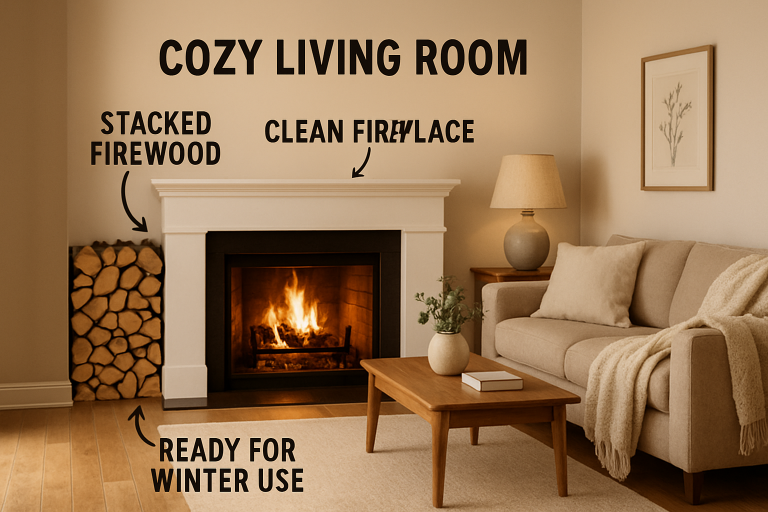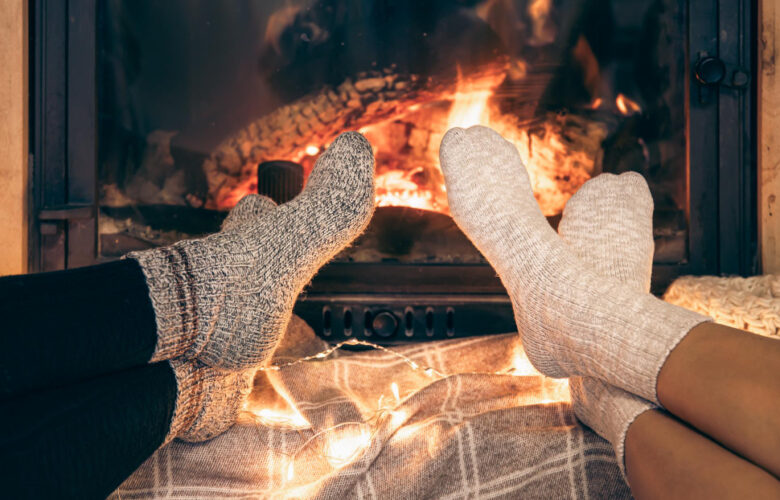Key Takeaways
- • Routine fireplace maintenance is vital for safe, efficient winter use and peace of mind.
- • Professional inspections address potential hazards and support long-term fireplace health.
- • Proper care can improve indoor air quality and make cozy fireside evenings stress-free.
As winter draws near and the enticing scent of woodsmoke fills the air, ensuring your fireplace is ready for another season of use becomes a household priority. Taking the time to properly prepare your hearth ensures not only a cozy atmosphere but also peace of mind regarding home safety. Before you strike the first match, it’s important to address the basics—from essential chimney inspections to the right firewood and maintenance steps.
Neglecting your fireplace before colder weather sets in can pose significant hazards, including fire risk, poor air quality, and unexpected repairs. That’s why following a comprehensive checklist is key to enjoying a warm, safe, and worry-free season at home. Let’s walk through each step to ensure your heart is up to the task.
Proper preparation also extends the lifespan of your fireplace and minimizes the chance of emergency service calls in the middle of winter. Homeowners who follow a yearly maintenance regimen enjoy efficient fires, improved air quality, and protection against costly chimney damage.

Schedule a Professional Inspection
Before the first cold snap, having a certified chimney sweep conduct an inspection is the single most important step in fireplace maintenance. A professional inspection will uncover safety issues such as creosote buildup, loose masonry, or animal nests, and address them before they escalate. Regular chimney inspections give homeowners the confidence to enjoy crackling fires all winter long without the hidden dangers of unseen deterioration or blockage.
Clean the Firebox
One of the simplest yet crucial tasks in fireplace care is cleaning the firebox. Remove all ash, burnt wood scraps, and other debris to ensure optimal airflow and combustion. Although a thin layer of ash—about 1 inch—helps insulate the next fire, excessive ash poses a risk of blockage or scattered embers. Cleaning after every few uses not only improves efficiency but also reduces lingering odors.
Inspect and Clean the Chimney
Creosote, a tarry substance formed during wood-burning, is the leading cause of chimney fires. According to the National Fire Protection Association, having your chimney professionally cleaned annually can reduce fire risk and ensure unobstructed airflow. Clearing away animal nests, leaves, or twigs is also essential, as these materials restrict ventilation and may release smoke or gases back into your home.
Check the Damper
A properly functioning damper controls the flow of air and smoke, ensuring efficient fires and preserving indoor air quality. Open and close the damper fully to confirm it moves freely and forms a seal when shut. If it’s stuck or damaged, repair or replacement is necessary to prevent drafts or smoke seepage into living spaces.
Stock Up on Seasoned Firewood
Choose only seasoned firewood that has been dried for at least six to twelve months. Burning “green” or wet wood produces excess smoke, higher creosote levels, and inefficient heating. Store firewood off the ground, stacked loosely, and away from the home’s exterior to minimize pest infestations and rot. Helpful firewood storage tips can also be found through trusted sources like Family Handyman.
Test Smoke and Carbon Monoxide Detectors
Every home with a fireplace must have working smoke and carbon monoxide detectors. Test each unit and install fresh batteries before the season begins. These devices are a critical line of defense, as fireplaces—if neglected—can emit invisible, hazardous gases. Early detection of dangerous fumes ensures the safety of everyone in your household.
Install a Chimney Cap
A sturdy chimney cap acts as a shield, preventing rain, snow, animals, and debris from entering the flue. Caps with wire mesh also block embers from escaping, reducing the risk of roof fires. Check your existing cap for rust, damage, or missing parts—replacing or repairing it as needed before winter hits.
Review Fireplace Tools and Safety Equipment
Keep an updated set of fireplace tools, including a poker, shovel, tongs, and an ash bucket, within arm’s reach. A strong fireplace screen or glass door adds an additional layer of protection against errant sparks. Also, assess the condition of your fire extinguisher and ensure it’s easily accessible. For more on essential fireplace safety equipment, consult This Old House for expert recommendations.
Attending to each step on this pre-season checklist rewards you with warmth, safety, and lasting comfort all winter long. Routine fireplace and chimney care not only provides peace of mind but also a more pleasant, enjoyable fireside experience, season after season.
Conclusion: Ready for a Cozy, Safe Winter
As the colder months approach, the most important takeaway is this: proactive preparation is the key to a warm, safe, and worry-free winter.
You’ve walked through the essential pre-season checklist, from the crucial step of scheduling a professional chimney inspection to stocking up on seasoned firewood and ensuring your smoke and carbon monoxide detectors are functional. By meticulously addressing creosote buildup, checking your damper, and securing your chimney with a cap, you minimize fire hazards, maximize heating efficiency, and protect your home and family.
Don’t leave your comfort and safety to chance. By committing to this yearly maintenance regimen, you’re not just preparing a fire; you’re investing in the long-term health of your entire fireplace system. Taking these actions now ensures that when you finally strike that first match, the only things you’ll be worried about are a good book and a warm cup of cocoa.
